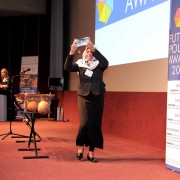World Future Council’s written contribution to the Day of General Discussion: “Children’s Rights and the Environment” 23 September 2016, Geneva.
The UN-Committee on the Rights of the Child, the body of independent experts responsible for reviewing progress made by States parties in implementing the Convention on the Rights of the Child, has decided to devote its 2016 general discussion day to the issue of children’s rights and the environment. The purpose of General Discussion Days is to foster a deeper understanding of the contents and implications of the Convention as they relate to specific articles or topics. The Convention on the Rights of the Child is the most widely ratified international human rights instrument, with 196 States Parties.
The overall objective is to promote understanding of the relationship between children’s rights and the environment; identify what needs to be done for child rights-related laws, policies and practices to take adequate account of environmental issues; and for environment-related laws, policies and practices to be child-sensitive. Assess the current status of environmental issues in child rights–related laws, policies and practices, and, vice versa, of children’s rights in laws, policies and practices related to the environment, including by identifying gaps and good examples.
The World Future Council has submitted a written contribution highlighting visionary and good policies and laws that already recognise the strong relationship between children’s rights and the environment.
Further information
2016 Day of General Discussion: “Children’s Rights and the Environment”
The role of exemplary laws and policies in upholding children’s rights and promoting a healthy environment
Written Contribution submitted by the World Future Council
Introductory remarks
The World Future Council (1) strongly welcomes the UN Committee on the Rights of the Child’s (UNCRC) decision to devote its 2016 general discussion day to the topic of children’s rights and the environment. Although the Convention on the Rights of the Child (CRC) contains some articles that touch upon the relationship between children’s well-being, health and the importance of an intact environment, a special article does not exist. This is primarily due to the fact that human rights laws and treaties, including the CRC, emerged before the international community had fully developed an understanding of the profound importance and impact that a healthy and intact environment has on the enjoyment of human / children’s rights.
For many years now we have witnessed the outcomes of global warming across the planet as rising sea levels and melting glaciers along with severe droughts, floods and hurricanes have left behind destroyed infrastructures, damaged crops and devastated livestock. Families and communities have all too often had to flee their damaged homes and belongings. More and more children and youth are affected by environmental toxicants, pollution and degradation of their environment that can have severe long-term impacts on their health and well-being.
Climate change raises a myriad of threats for children that have different effects on a range of human rights children should enjoy (2) and shows that the deprivation of one right can negatively affect others and the rights of generations that follow. Girls, boys, youth living in vulnerable situations and groups, (e.g. in poverty, with a disability), indigenous people, and those in developing countries often suffer the most.
The CRC is one the most important treaties that expresses the will of the international community to protect and safeguard children. This obligation is not limited to national territories and complex issues like climate change which are not limited to national borders create new challenges and demand fresh approaches to tackle them.
Relationship between children’s rights and the environment
Climate Change: In recent years the evidence for human influence on the climate system has grown to be clear and unequivocal (3). Weather phenomena like El Niño and La Niña, intensified by a warming climate, are already have a devastating impact on ecosystems and human well-being. (4) The right to life and survival (Article 4) is at risk not only due to environmental degradation but also due to the interplay between climate change and risks associated with nuclear weapons, facilities and materials (5).
The right to food and housing (Article 27) is under threat as climate change increases hunger, starvation and drought, weakens food security and undermines an adequate standard of living. In Eastern and Southern Africa 26.5 million children need support, including more than one million who need treatment for severe acute malnutrition. Rising food prices force families to forgo meals, sell off their assets and cattle and take other drastic measures in order to survive (6). Many species including marine organisms, coral reefs and polar ecosystems will not be able to keep up with the rate of climatic change which will lead to increased extinctions and profoundly challenge the health and productivity of fisheries and other ecosystems. Climate change is, furthermore, projected to reduce renewable surface water and groundwater resources in most dry subtropical regions which will increase competition for water (7). Children are particularly affected by a lack of essential nutrients, which in turn not only impairs their healthy development but also their concentration and receptivity at school. Particularly for children under 5 severe malnutrition can lead to starvation. Undernutrition at a young age can have long-lasting effects, including increased risk of illness, delayed mental development or premature death, and can be passed on to the next generation. Undernourished girls have a greater likelihood of becoming undernourished mothers, who are more likely to give birth to low birth-weight babies (8).
The Right to health (Article 24) is a precondition for other human rights and is strongly related to the right to access to clean water and sanitation. Changes in temperature, humidity and rainfall have an impact on water, sanitation and hygiene and have been linked to increases in vector and water-borne diseases such as dengue fever, diarrhea and cholera, which are major killers of children (9). Sudden climatic events can produce post-traumatic stress and make healthcare infrastructure unavailable. In combination with food insecurity it also negatively affects access to anti-retroviral therapy and adherence to treatment requirements (10). Drought and its impact on livelihoods can also force people, especially adolescent girls and women, to engage in transactional sex, which increases their vulnerability to HIV infection. Mortality among children living with HIV is two to six times higher for those who are severely malnourished than for those who are not (11).
Children’s right to nationality, to identity and to be cared by his or her parents (Art. 7 and 8) and to protection could be violated as climate change contributes to an increasing number of children being deprived of a family environment due to the death of parents or from events that force them to work abroad or abandon or sell their children. This puts children in danger of being trafficked, to be taken into alternative care or to be on the move (12). The right to be registered immediately after birth and to have a name as well the right to a nationality is also endangered by the increasing risk of unexpected climate disasters as parents die or are separated from their children.
The right to a nationality is also at stake as some island nations face inundation due to rising sea levels, potentially leaving children stateless if they are not provided with a new nationality (13).
The number of unaccompanied minors is on the rise putting rights and well-being at risk (Article 29). In drought-affected areas, some children, especially girls, are staying away from school to fetch water over long distances, or have to migrate with their families due to loss of crops or livestock. Being out of school often increases a child’s risk of abuse, exploitation and, in some areas, child marriage and violates the right to education (Article 29). Children’s right to rest and leisure (Article 31) and to participate is also affected by climate change as children have to contribute to a family’s income.
Environmental pollution causes grave and irreparable damage to the earth and contributes to health problems and a lower quality of life (14). Air pollution is a major environment-related health threat to children and a risk factor for both acute and chronic respiratory disease; especially Asthma and allergies (15)(16) but also to other adverse health effects. Some of the most important harmful effects are perinatal disorders, infant mortality, allergy, malignancies, cardiovascular disorders, an increase in oxidative stress, endothelial dysfunction and mental disorders. Numerous studies have exposed that environmental particulate exposure has been linked to increased risk of morbidity and mortality from many diseases, organ disturbances, cancers, and other chronic diseases (17). Children are particularly at risk as they are still growing and their immune systems and detoxification mechanisms are not yet fully developed. Children engaged in hazardous labour, such as working in mines and quarries, are most at risk. Sick, malnourished and weak children can face ongoing health challenges as adults.
Obligations of States and other actors
General Comment No. 15 (2013) on the right of the child to the enjoyment of the highest attainable standard of health (art. 24) already provides some clear action points related to local environmental pollution but stays vague when addressing the role of business activities and climate change (18).
Strong laws and policies along with their implementation and monitoring play a crucial role to ensure children’s rights and the best interests of the child are upheld and respected. When drafting a new law or amending an existing one the CRC’s general principals along with its General Comments should be taken into consideration.
The incorporation of children’s rights and environmental rights into fundamental law and/or of the country’s constitution could ensure that the best interests of the child are recognized. While three quarters of the world’s national constitutions include references to environmental rights, few have treated these provisions as legally enforceable. Supreme Courts or constitutional courts, as national bodies in charge of ensuring the conformity of domestic laws with the Constitution can play a vital role in highlighting the need for action to align, amend or adopt new laws in accordance with the CRC. Argentina’s Supreme Court’s judgement on environmental rights, 2008 (19) and the ruling of the Supreme Court of the Philippines in favour of the rights of future generations to a healthy environment (20) are good examples.
With innovative future-just policies and appropriate market signals, businesses can lead the way in securing a sustainable future by pursuing broader mandates with the correct legal frameworks to reach social and environmental goals. In 2010, Maryland became the first US state to pass the Benefit Corporation legislation which aims to provide standards for corporations that follow a triple bottom line—’People, Planet and Profit’ (21). While voluntary agreements and commitments by industry and business are on the rise with some notable impacts, law enforcement could lead to more effective, sustainable solutions at a faster pace which Scotland’s Zero Waste Plan demonstrates (22). The successful ban of plastic bags in many countries also shows how laws, when effectively applied and implemented, can play a huge role in protecting the environment (23).
Global treaties, conventions and commitments could lead states parties to develop comprehensive laws in response to many environmental challenges. One example is the Costa Rica Biodiversity Law of 1998 (24). The Montreal Protocol, 1987 is another success story. Recently UNEP announced that Montreal Protocol parties have achieved complete phase-out of ozone-depleting CFCs, once widely used in refrigerators and spray cans, which contributes – among other things – to higher skin cancer rates (25).
The UN decade on Education for Sustainable Development achieved lots of success in creating awareness of good practices and strengthening environmental education. There is, however a strong need for broader structural implementation. The right to education (Article 29) stresses the importance of teaching respect for the natural environment and understanding and engaging with global problems. Maryland’s Environmental Literacy Standards (2011) is one the first regulations that mandates that students to be environmentally literate as a high school graduation requirement with a number of very positive results for students, teachers and the local environment (26).
The spectrum of environmental policies has broadened gradually to address increasingly complex environmental and health related problems but many environmental policy interventions are still necessary (27). Children’s rights impact assessments are a vital tool to assess the impact of a law and should include environmental aspects, as is foreseen in Scotland (28).
Recommendations to UNCRC (see also annex)
- Compile a General Comment related to the topic children’s rights and the environment.
- Examine the possibility of an Optional Protocol due to the urgency of the topic.
- Assist the establishment of Ombudspersons for Future Generations at the national and international levels, who can actively advocate for long-term interests.
- Promote comprehensive and mandatory environmental education/education for sustainable development.
- Encourage States to contribute to the fulfilling of the Sustainable Development Goals.
References
1. The World Future Council works on solutions to some of the most pressing challenges by finding and spreading exemplary laws and policies that have a proven record of producing positive impacts both for current and future generations, working with parliamentarians, policy makers and relevant stakeholders as well UN bodies at an international level.
2. Susana Sanz-Caballero, children’s rights in a changing climate: a perspective from the UN-CRC, in ethics in science and environmental politics, vol. 13:1-14, 2013
3. Intergovernmental Panel on Climate Change, Climate change 2014, Synthesis report summary for policymakers,
4. El Niño 2015-2016 hit hardest some of the world’s poorest countries hardest, often leaving children the worst affected. Severe drought, flooding and a higher than usual occurrence of forest fires. http://www.unicef.org/environment/
5. https://www.worldfuturecouncil.org/peace-and-disarmament/
6. Families who use to eat two meals a day may cut back to one and those who could once provide a single meal for their dependents are entirely reliant on food aid.
7. Intergovernmental Panel on Climate Change, Climate change 2014, Synthesis report summary for policymakers
8. http://www.unicef.org/environment/
9. El Niño has created in Brazil favourable breeding conditions for the Aedes mosquito that can transmit the Zika virus, as well as dengue, yellow fever and chikungunya.
10. Patients tend not to take medication on an empty stomach, and many people will use their limited resources for food rather than for transport to a health facility.
11. http://www.unicef.org/environment/
12. Newborns of parents forced to migrate are at greater risk of not to be registered due to loss of personal documents or entering a country without a visa.
13. Susana Sanz-Caballero, children’s rights in a changing climate: a perspective from the UN-CRC, in ethics in science and environmental politics, vol. 13:1-14, 2013
14. Acid rain, water, noise, soil and light pollution are also on the rise adding further stresses to the environment, wildlife and humans.
15. WHO subdivides between indoor air pollution (which is responsible for 2 million deaths annually mostly children caused by pneumonia), outdoor pollution and urban outdoor air pollution (are estimated to cause 1.3 million deaths worldwide per year. Children living in middle-income countries disproportionately experience this problem) and transport-related air pollution. http://www.who.int/ceh/risks/cehair/en/ and http://www.euro.who.int/en/data-and-evidence/evidence-informed-policy-making/publications/hen-summaries-of-network-members-reports/what-are-the-effects-of-air-pollution-on-childrens-health-and-development.
16. Susanna Esposito et al in Impact of air pollution on respiratory diseases in children with recurrent wheezing or asthma, BMC Pulmonary Medicine201414:130, DOI: 10.1186/1471-2466-14-130, Published: 7 August 2014
17. Roya Kelishadi, Environmental Pollution: Health Effects and Operational Implications for Pollutants Removal, Journal of Environmental and Public Health, Volume 2012 (2012), Article ID 341637,http://www.hindawi.com/journals/jeph/2012/341637/
18. General Comment No. 15, Paraphe 49
19. Celebrating the world’s best laws and policies to secure children’s rights, Future Policy Award 2015, World Future Council Foundation, 2015, page 15.
20. In July 1993 the Supreme Court of the Philippines ruled in favour of a group of children, acting on their own behalf as well as that of future generations, to cancel timber licences on the grounds of a violation to their constitutional rights to a healthy environment http://www.futurepolicy.org/crimes/right-of-future-generations/
21. http://www.futurepolicy.org/business-priorities/maryland-benefit-corporations/
22. Scotland’s Zero waste, 2010 seeks to lay the foundation for a social transformation towards a zero waste society http://www.futurepolicy.org/enterprise-and-design/consumption/zerowastescotland/
23. http://www.unep.org/PDF/Kenya_waste_mngnt_sector/appendix.pdf
24. http://www.futurepolicy.org/biodiversity-and-soil/costa-ricas-biodiversity-law/
25. http://ozone.unep.org/en/focus
26. The regulation aims to provide a locally developed programme of study throughout the curriculum that catalyses change within the community and builds as environmental stewardship ethic in students. http://www.futurepolicy.org/curricula-reform/marylands-els/
27. http://www.eea.europa.eu/themes/policy/intro
28. https://www.cypcs.org.uk/uploaded_docs/children’s%20rights%20impact%20assessment.pdf

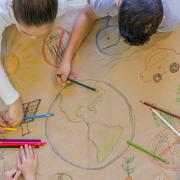
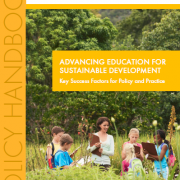
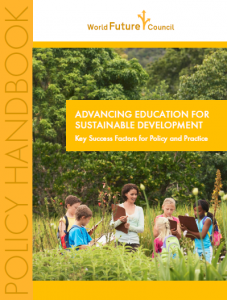
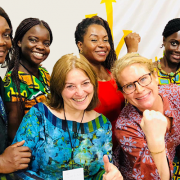
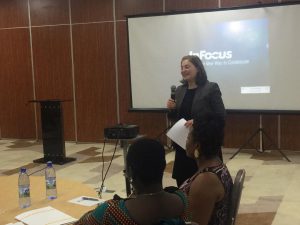
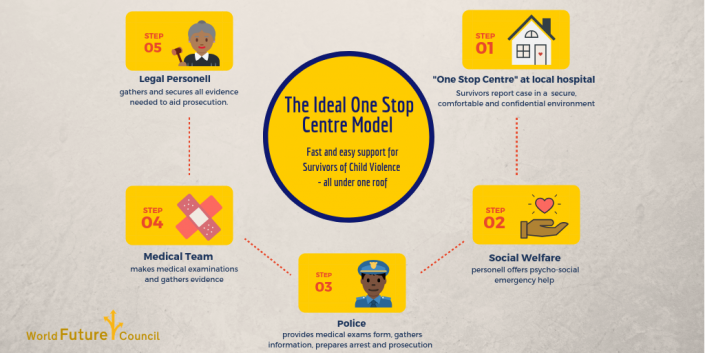
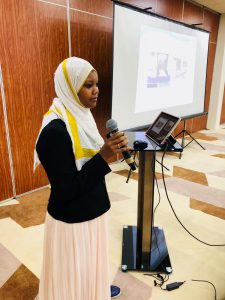
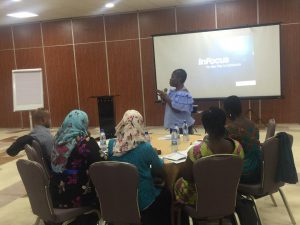
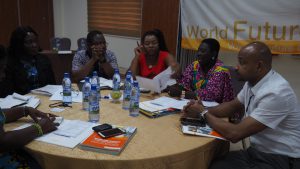
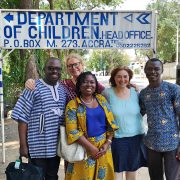
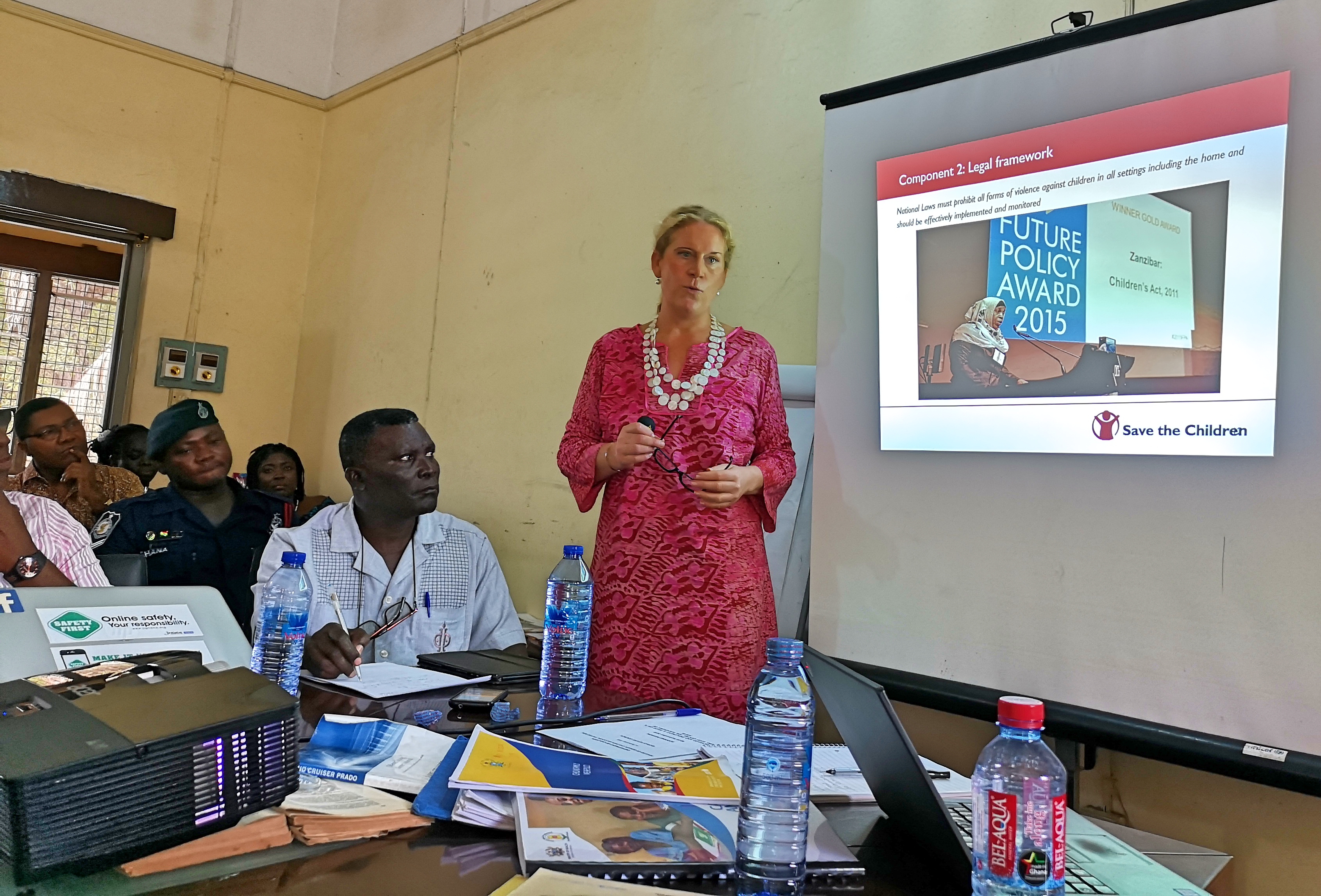
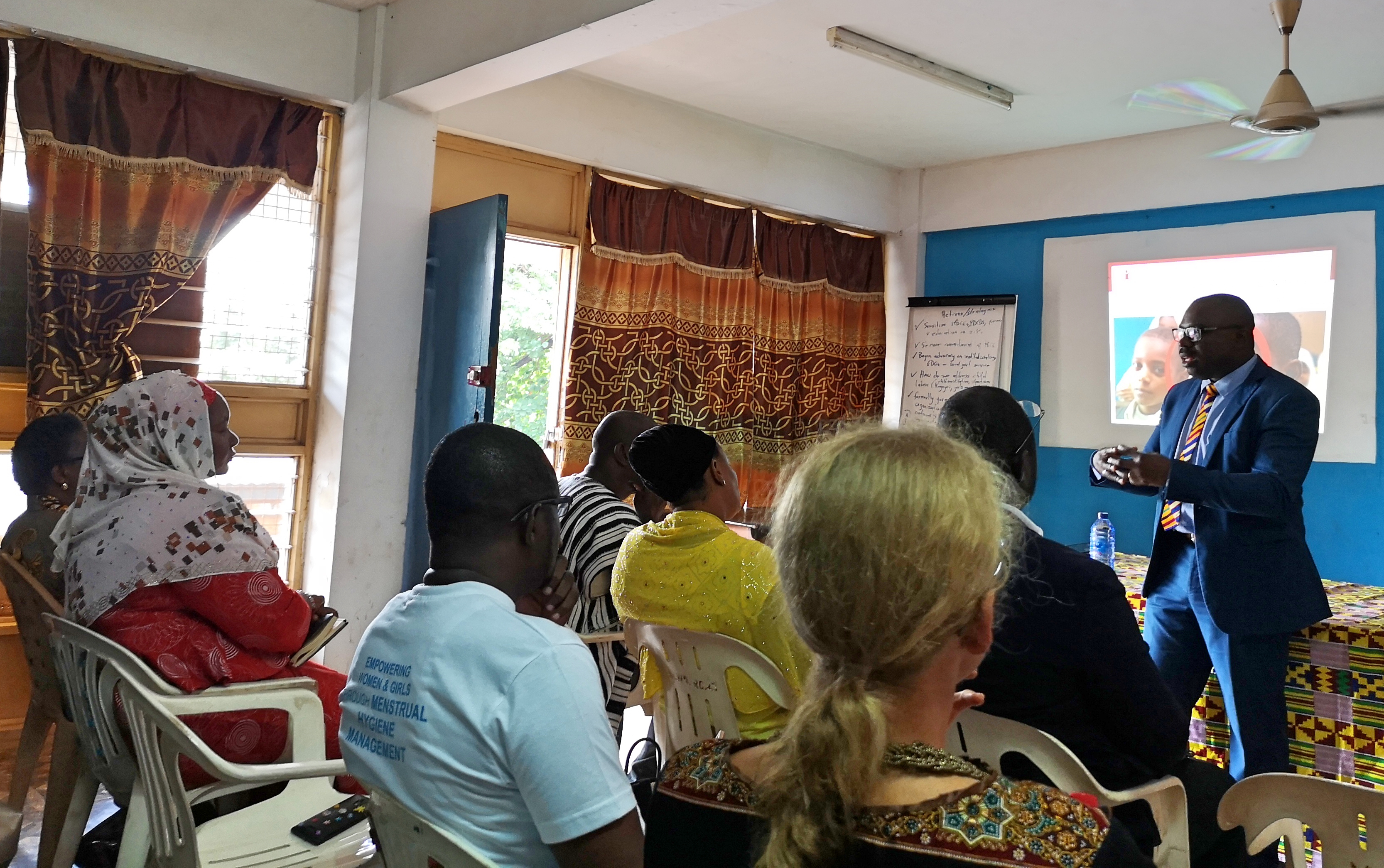
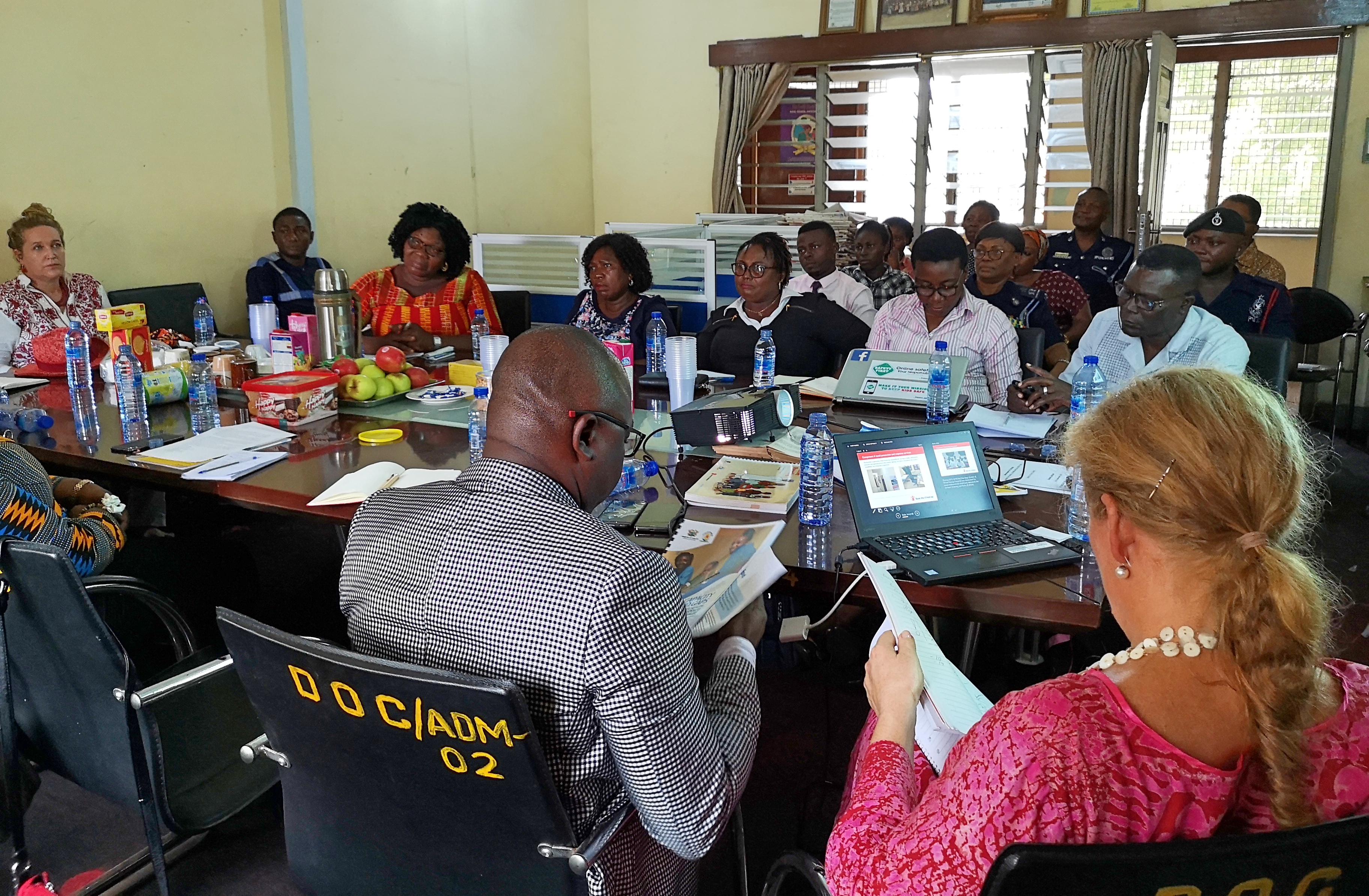
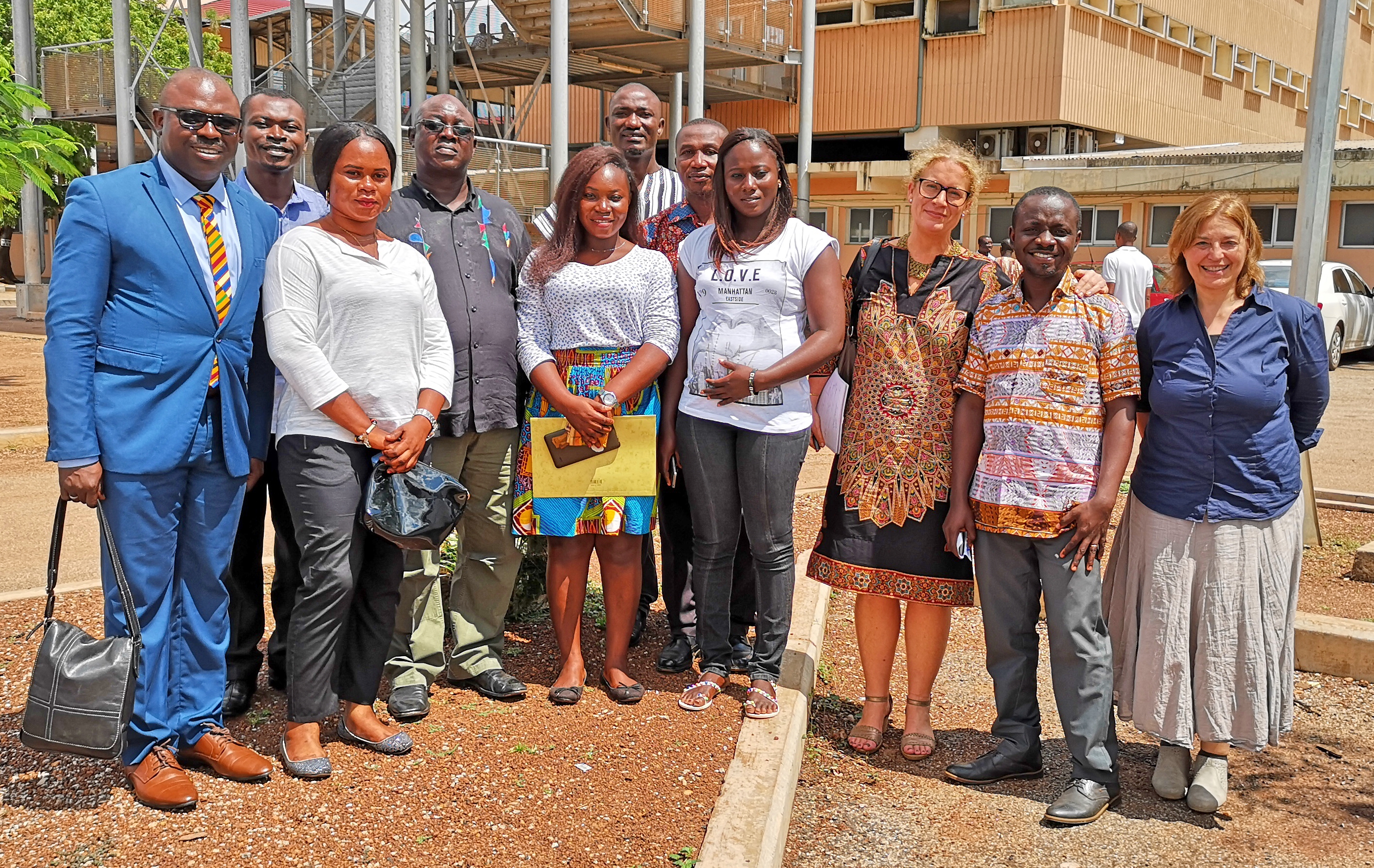
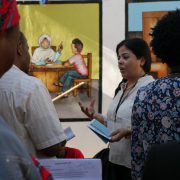

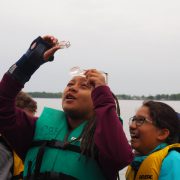
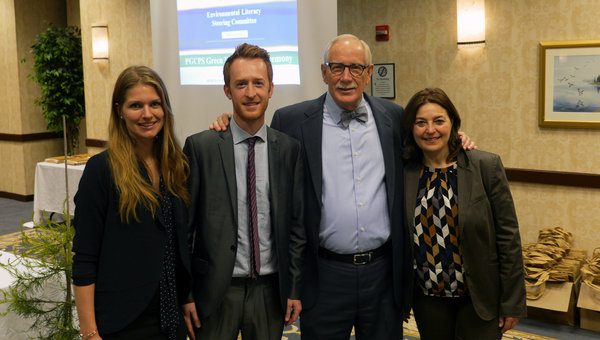
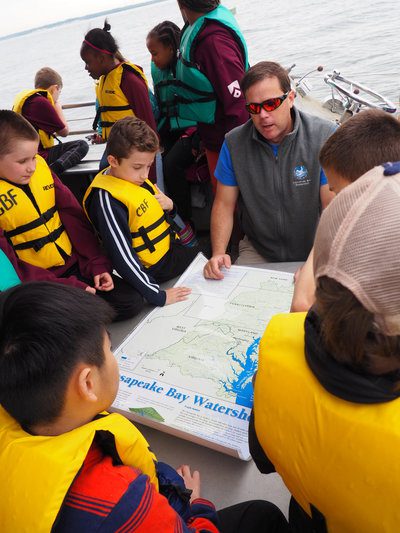 While Crellen is no doubt a great example of using nature as a learning tool to focus on real-world problems – combining a vibrant teaching environment with student led inquiry that is making learning both meaningful and fun – it is by no means atypical. In fact, Maryland’s environmental literacy standards not only encourage, but mandate, this kind of learning through the implementation of ‘local action projects that protect, sustain and enhance the natural environment’. At a bustling inner city high school in Baltimore we heard from Spanish and German teachers how they were integrating environmental literacy into their lessons; using recycled materials to make piñatas and taking environmental pollution as a theme to discuss in their class.
While Crellen is no doubt a great example of using nature as a learning tool to focus on real-world problems – combining a vibrant teaching environment with student led inquiry that is making learning both meaningful and fun – it is by no means atypical. In fact, Maryland’s environmental literacy standards not only encourage, but mandate, this kind of learning through the implementation of ‘local action projects that protect, sustain and enhance the natural environment’. At a bustling inner city high school in Baltimore we heard from Spanish and German teachers how they were integrating environmental literacy into their lessons; using recycled materials to make piñatas and taking environmental pollution as a theme to discuss in their class.
